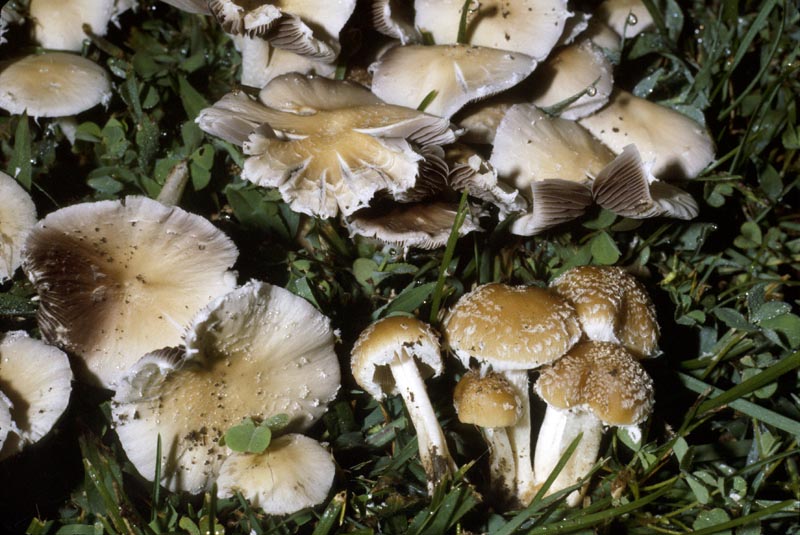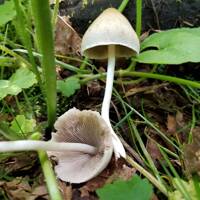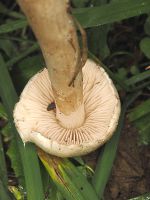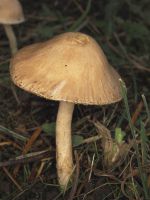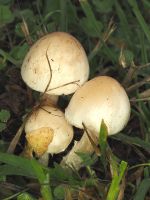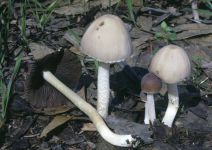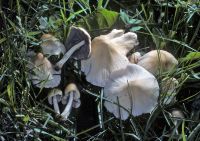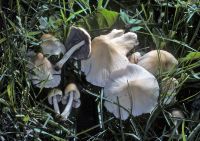Habitat: It is found around stumps or in grassy areas in the vicinity of buried roots of hardwood trees.
Conservation Status: Not of concern
pale brittlestem, suburban Psathyrella
Psathyrella candolleana is one of the commoner psathyrellas, particularly in urban settings, and probably is the one most frequently eaten (which, however, is not saying much). The key characters are the pale honey color of the young convex caps, fragments of the veil adhering to the edge (and sometimes the center) of the cap, the white stipe, and the general stature with the cap relatively wide in relation to the length of the stipe. The veil remnants can disappear quickly and there are many species with caps that are darker when young, but similarly pale after they have dried, so young specimens are necessary for confident identification. It is found around stumps or in grassy areas in the vicinity of buried roots of hardwood trees growing in clusters, small groups, or scattered over a small area. Like many panaeoluses and psathyrellas, it occurs primarily during warm moist weather. Although edible, often abundant, and said to have good flavor, it is thin-fleshed and not always easy to identify which limit its use for the table.
PNW Herbaria: Specimen records of Psathyrella candolleana in the Consortium of Pacific Northwest Herbaria database.
CalPhotos: Psathyrella candolleana photos.


